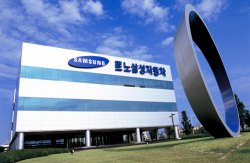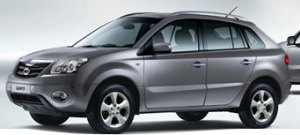
| Renault (France) - 80.1% |
| Samsung (Korea) - 19.9% |
| - |
Design and R&D center: Kihueng (near Seoul)

2016: 111,097 units
2015: 80,028 units
2014: 82,123 units
2013: 67,174 units
2012: 65,691 units
2011: 118,135 units
2010: 155,697 units
2009: 136,467 units
2008: 104,484 units
2007: 119,824 units
Unfortunately, that very same year came Asian financial crisis. Production stopped and the car division was up for sale. In 2000, Renault acquired majority shares of Samsung and renamed it to Renault Samsung Motors (or RMS). As the French company also owned Nissan, RMS continued relying on Nissan designs for its products - SM3 and SM5 were badge-engineered versions of Bluebird Sylphy and Teana respectively. 2007 arrived a fresh product, QM5 crossover, although it was designed by Renault and developed by Nissan.
 QM5 (2007)
QM5 (2007)In 2008, RSM established its own R&D center and design studio at Kihueng. This signalled the beginning of its own design and product development for the next generation vehicles. Its first in-house-designed concept car was shown at Seoul Motor Show in 2009. The second generation SM3 will also be engineered in-house.